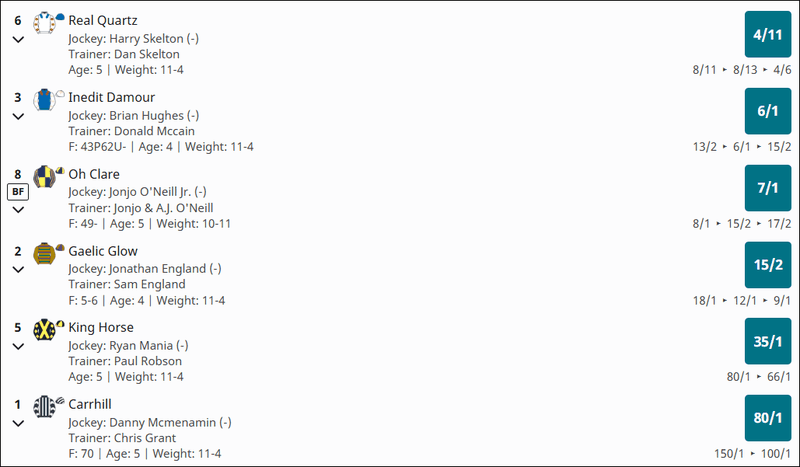If you’ve ever stood by the rails at the track, ticket in hand, and wondered how on earth the odds actually work, you’re not alone. Understanding how to read horse racing odds and calculate payouts isn’t just for seasoned punters. Once you get the hang of it, it makes following the races a whole lot more fun, and can even help you make smarter bets.
What is Meant by the “Odds”?
In simple terms, odds are a way of showing how likely a horse is to win and how much you’ll get back if your bet comes through. They’re the prices you’ll see on the tote board or online at your bookmaker, and they’re usually written as pairs of numbers like 4 to 1 or 2 to 5.
The first number tells you how much profit you’ll make, while the second number is the amount you need to bet. So, if you see odds of 2 to 1, it means for every pound you bet, you’ll win two pounds, plus you’ll get your original bet back. There are two main ways odds are displayed: as fractions and decimals.
Fractional odds are the traditional ones. They look like 4/1 and are read as “four to one”. If you bet one pound and your horse wins, you’ll make four pounds in profit, plus your original pound back. Decimal odds are gaining popularity, particularly online. They already include your stake in the total. So, if the odds are shown as 5.00, you simply multiply that by your bet to calculate your return. A £10 bet at 5.00 would return £50 in total.
How to Read the Horse Racing Odds?

When you first glance at the odds board, it can seem confusing, but it’s actually quite logical once you know what’s happening. Before the racing even starts, tracks and betting sites publish what’s called the morning line.
These are the odds set by a handicapper before any bets are placed. They’re basically an educated guess about how the betting might go. As the day goes on and more people place their bets, the odds change.
This happens because horse racing uses a pool betting system, so every wager affects the final price. You’ll see the odds shift right up until post time, when betting closes. Each race has a favourite, which is simply the horse with the shortest odds, the one most punters think will win. If there are two horses with the same chance, you might see the letters JF next to their names, meaning joint favourites.
A Way to Calculate Odds and Payouts

Most bets these days still run with a pari-mutuel wagering system, meaning that when you place a bet, it goes into a pool with other bets. Unlike betting at a casino, where you’re playing the house, you’re betting against others, and the bookie just takes their cut for handling the administration. This is why you see the odds fluctuate later on in the day. If this isn’t for you, you can opt for fixed-odds betting.
Here are some of the most common pari-mutuel horse bets that are used:
Straight Bets:
- Show bets: betting on the horse that places third
- Win bets: betting on the horse that finishes first
- Place bets: betting on the horse that finishes second
Exotic Bets
- Trifecta: Choose the first three finishes in the correct order
- Trifecta Box: Choose the first three finishes in any order
- Trifecta Key: Choose one horse to win, the other two to finish second and third
- Exacta: picking the first and second horses to finish
- Superfecta: select the order of the first four horses to cross the finish line
- Superfecta box: choose the four horses to finish in any order
- Superfecta Key: choose the first horse to win, and the other three to follow in any order
Where to Find the Odds
Reading the odds and understanding them takes time and practice. You need to get onto a bookie online and read the odds daily. Not only will this keep you up to date with what’s going on in the races, but you’ll also become familiar with the data, making it easier to spot a good bet. If you’re looking for a reliable bookie to help you find the best odds, check out today’s racing odds at Ned. They have all the information you need to stay up-to-date.
Final Thoughts
Horse racing odds can seem complicated at first, but once you break them down, it’s really just about understanding value and probability. With a bit of practice, you’ll start reading the boards with confidence and making more informed bets. Remember, even the most experienced punters lose sometimes; that’s all part of the game. The key is to bet smart, manage your bankroll, and enjoy the day out. After all, there’s nothing quite like cheering your horse home and feeling that rush as it crosses the finish line first.

